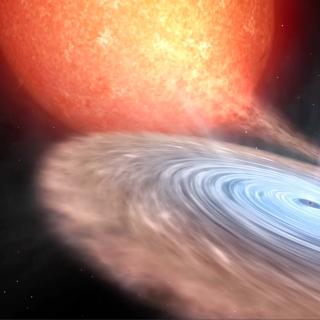Bibcode
Pattie, E. C.; Maccarone, T. J.; Britt, C. T.; Heinke, C. O.; Jonker, P. G.; Lorimer, D. R.; Sivakoff, G. R.; Steeghs, D.; Strader, J.; Torres, M. A. P.; Wijnands, R.
Referencia bibliográfica
Monthly Notices of the Royal Astronomical Society
Fecha de publicación:
6
2024
Número de citas
0
Número de citas referidas
0
Descripción
We present the results of a high angular resolution (1.1 arcsec) and sensitivity (maximum of ~0.1 mJy) radio survey at 1-2 GHz in the Galactic Bulge. This complements the X-ray Chandra Galactic Bulge Survey, and investigates the full radio source population in this dense Galactic region. Radio counterparts to sources at other wavelengths can aid in classification, as there are relatively few types of objects that are reasonably detectable in radio at kiloparsec distances, and even fewer that are detected in both X-rays and radio. This survey covers about 3 sq deg of the Galactic Bulge Survey area (spanning the Galactic coordinate range of -3° < l < +3° and +1.6° < b < +2.1°) as a first look into this region of the Galaxy with this combination of frequency, resolution, and sensitivity. Spectral indices within the observed band of 1-2 GHz were calculated for each source to assist in determining its emission mechanism. We find 1617 unique sources in the survey, 25 of which are radio counterparts to X-ray sources, and about 100 of which are steep-spectrum (α ≲ -1.4) point sources that are viable pulsar candidates. Four radio sources are of particular interest: a compact binary; an infrared transient with an inverted radio spectrum; a potential transitional millisecond pulsar candidate; and a very steep spectrum radio source with an X-ray and bright infrared counterpart. We discuss other notable sources, including possible radio transients, potential new planetary nebulae, and active galactic nuclei.
Proyectos relacionados

Agujeros negros, estrellas de neutrones, enanas blancas y su entorno local
Los agujeros negros y estrellas de neutrones en binarias de rayos-X son laboratorios únicos para explorar la física de estos objetos compactos. No solo permiten confirmar la existencia de agujeros negros de origen estelar a través de mediciones dinámicas de sus masas, sino que también permiten investigar el comportamiento de la materia y la
Montserrat
Armas Padilla